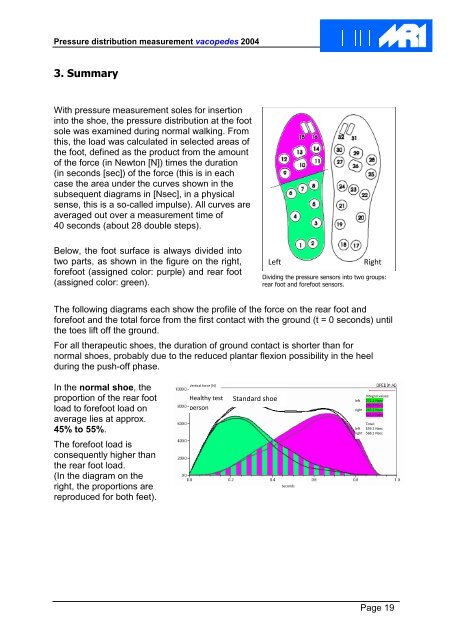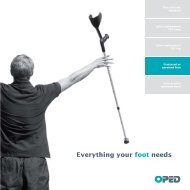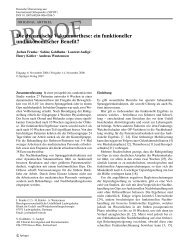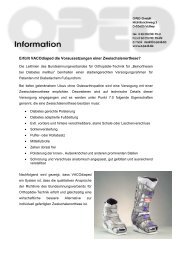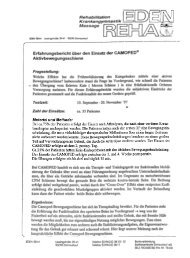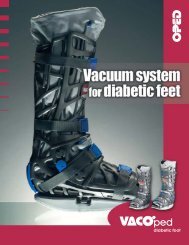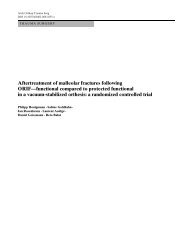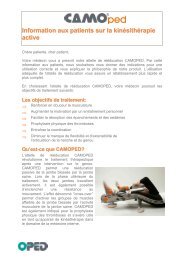Biomechanikstudy_MRI_AKT-O_EN.pd - VACOped
Biomechanikstudy_MRI_AKT-O_EN.pd - VACOped
Biomechanikstudy_MRI_AKT-O_EN.pd - VACOped
- No tags were found...
You also want an ePaper? Increase the reach of your titles
YUMPU automatically turns print PDFs into web optimized ePapers that Google loves.
Pressure distribution measurement vacopedes 20043. SummaryWith pressure measurement soles for insertioninto the shoe, the pressure distribution at the footsole was examined during normal walking. Fromthis, the load was calculated in selected areas ofthe foot, defined as the product from the amountof the force (in Newton [N]) times the duration(in seconds [sec]) of the force (this is in eachcase the area under the curves shown in thesubsequent diagrams in [Nsec], in a physicalsense, this is a so-called impulse). All curves areaveraged out over a measurement time of40 seconds (about 28 double steps).Below, the foot surface is always divided intotwo parts, as shown in the figure on the right,forefoot (assigned color: purple) and rear foot(assigned color: green).LeftRightDividing the pressure sensors into two groups:rear foot and forefoot sensors.The following diagrams each show the profile of the force on the rear foot andforefoot and the total force from the first contact with the ground (t = 0 seconds) untilthe toes lift off the ground.For all therapeutic shoes, the duration of ground contact is shorter than fornormal shoes, probably due to the reduced plantar flexion possibility in the heelduring the push-off phase.In the normal shoe, theproportion of the rear footload to forefoot load onaverage lies at approx.45% to 55%.Vertical force [N]Healthy testpersonStandard shoeIntegral values:left 272.2 Nsec286.9 Nsecright 243.2 Nsec324.9 NsecTotal:left 559.2 Nsecright 568.1 NsecThe forefoot load isconsequently higher thanthe rear foot load.(In the diagram on theright, the proportions arereproduced for both feet).SecondsPage 19


